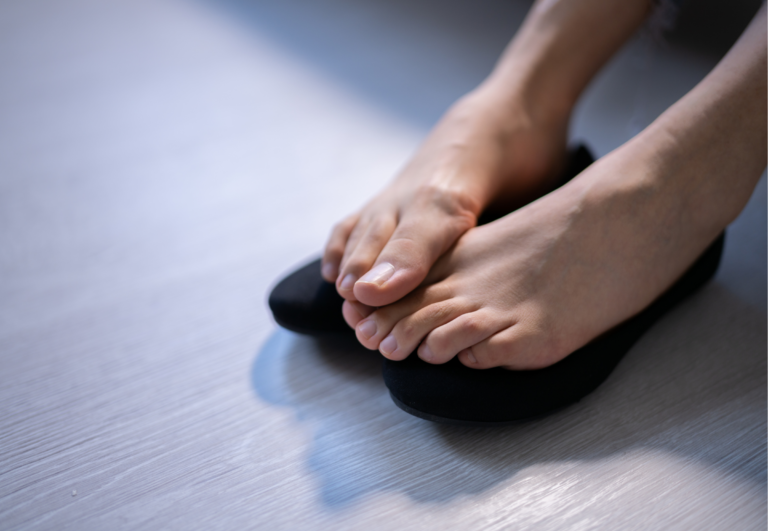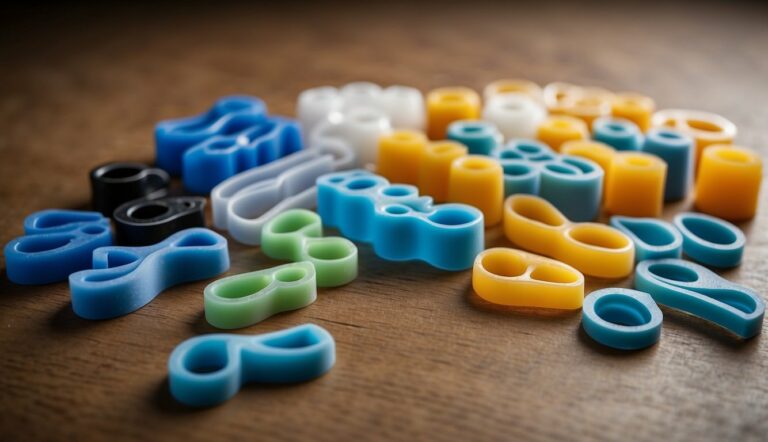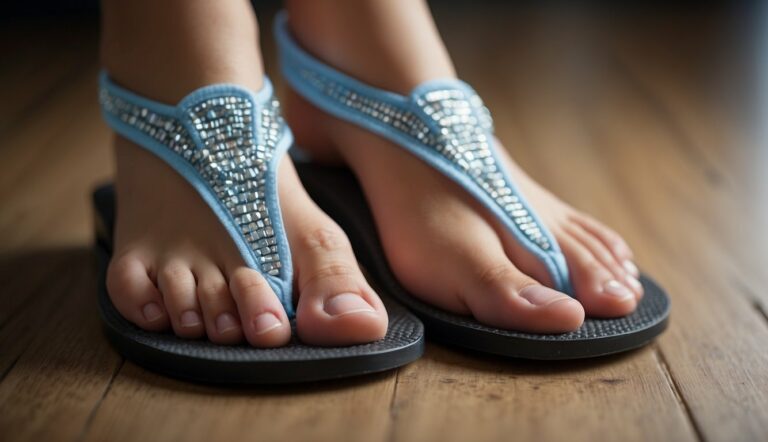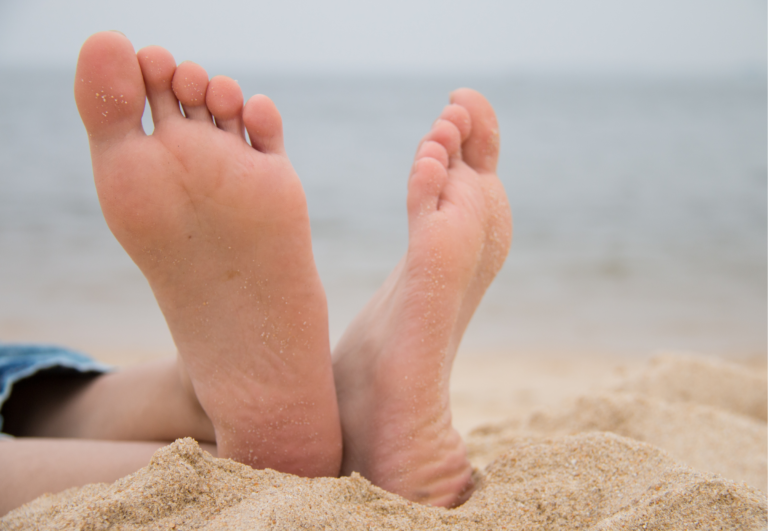Why Do Toe Spacers Hurt: Uncovering the Causes of Discomfort
Toe spacers are simple devices designed to reposition and align your toes to help reduce foot pain and improve overall foot health. As someone who frequently uses toe spacers, I’ve noticed they can sometimes cause discomfort, especially during initial use. This discomfort could stem from the stretching and realigning of the toe muscles and ligaments or from the pressure against soft tissue if the spacers are too rigid or improperly sized.
My experience tells me that while toe spacers are intended to create space between the toes to promote better alignment and ease tension, they might hurt if used excessively or if your feet aren’t accustomed to them. Comfort with toe spacers can vary greatly depending on individual foot shape, the presence of foot conditions like bunions or hammertoes, and the duration for which the spacers are worn.
If you’re experiencing pain with toe spacers, it’s important to assess the fit and material of the spacers, and consider gradually increasing the duration they are worn. It’s vital to prioritize your comfort, as persistent pain may indicate the need for a different approach or product. Remember, while toe spacers can be beneficial for some people, they are not a one-size-fits-all solution and may not be suitable for everyone’s needs.
Causes of Toe Spacer Discomfort
I find that discomfort from toe spacers often comes down to a few key issues. It’s important to understand these potential problems to prevent or address pain effectively.
Improper Use
Using toe spacers incorrectly can lead to discomfort and even pain. For instance, wearing them for too long when you first start or using them improperly with certain activities can cause issues. Here’s what you should know:
- Duration: Begin with short periods of wear and gradually increase.
- Activity: Avoid wearing them during high-impact exercises initially.
Fit and Sizing Issues
The right fit is crucial for toe spacers to be beneficial and comfortable. Factors that affect fit include:
- Shoe Type: High heels and shoes with narrow toe boxes can compress toes even with spacers.
- Sizing: Toe spacers that are too large or too small can exacerbate issues like bunions and cause discomfort.
Material Sensitivities
The materials used in toe spacers can cause discomfort if you have sensitivities or allergies. Most spacers are made from silicone, which is generally hypoallergenic, but here are some considerations:
- Silicone Quality: Lower-quality silicone may cause skin irritation.
- Allergies: Be aware of any material allergies you have and check the product specifications.

Addressing Toe Spacer Pain
When toe spacers cause discomfort, it’s typically a sign that something isn’t right. It could be related to improper use or an indication that an alternative method may be more suitable.
Correct Usage Practices
Choosing the Right Size:
The key factor in using toe spacers comfortably is ensuring they fit well. Toe spacers come in various sizes and selecting the right one can prevent excessive pressure and strain.
- Small: For individuals with less space between toes
- Medium: Fits average toe gaps
- Large: Best for those with more natural space between toes
- Ensure your feet are clean and dry before applying the spacers.
- Gently insert the toe spacers between each toe, avoiding force.
Duration of Use:
Start with a short period, maybe 15-20 minutes, and gradually increase the time as your toes adjust.
Alternative Options
If toe spacers lead to persistent discomfort despite correct usage, there are alternatives that may alleviate foot pain with less direct pressure:
- Exercises: Strengthening and stretching exercises can help improve toe alignment and relieve discomfort. Professional guidance, such as from a podiatrist, ensures these exercises are performed correctly.
- Orthotics or Splints: Custom orthotics or splints designed for your foot’s anatomy may provide relief with less immediate discomfort.
- Rehab Methods: Exploring different rehab techniques with a specialist might reveal less painful methods that are just as effective for your needs.
Medical Conditions and Toe Spacers
Toe spacers can be beneficial, but for individuals with certain medical conditions, they may cause discomfort. Understanding the nuances of how they interact with various foot-related ailments is key for proper use.
Foot Deformities
Foot deformities such as bunions, hammertoes, and hallux valgus can lead to misaligned toes. In cases of bunions, a painful, bony bump at the base of the big toe, toe spacers are often used to realign the toes and provide relief. Hammertoes, which are toes stuck in a bent position, may also benefit from the use of toe spacers.
- Bunions and Hammertoes:
- Bunion splints may alleviate pressure on the joint.
- Toe spacers can aid in realigning toes to a more natural position.
For individuals with deformities, the introduction of toe spacers may initially cause some discomfort as they apply gentle pressure to reposition the toes.
Post-operative Recovery
After surgery to correct foot deformities such as bunions or hammertoes, toe spacers can play a role in the recovery process.
- Post-Surgery:
- Recovery: Use of toe spacers can help maintain proper toe alignment.
- Arthritis: For conditions like osteoarthritis, rheumatoid arthritis, and gout, toe spacers can help maintain spacing and reduce pain.
It’s important to follow a healthcare provider’s guidance when using toe spacers during post-operative recovery, as improper use may lead to additional pain or hinder healing.
Advanced Toe Spacer Usage
Toe spacers are not just for those seeking relief from foot pain; they’re also powerful tools for athletes and those looking to enhance foot strength and stability.
Athletic Performance
Athletes, specifically runners, often leverage toe spacers to improve performance. The benefits are multiple: alignment of the foot, arch support during movements, and enhanced mobility in the toes. This improved alignment can contribute to better balance and propulsion, potentially improving running efficiency.
- Running: Using toe spacers may help maintain toe alignment and prevent issues stemming from the repeated impact of exercise.
- Exercise: Incorporating toe spacers during warm-ups can prepare the foot muscles for the demands of physical activity.
Foot Strength and Stability
Strengthening the intrinsic foot muscles is key in achieving total foot stability. Toe spacers can assist in this process by maintaining proper toe placement, which engages and strengthens foot muscles during exercise.
- Foot Muscles: Regular use of toe spacers can lead to stronger foot muscles, which support the arch and overall stability.
- Mobility: Improved mobility from using toe spacers contributes to a wider range of motion and stronger feet.
My experiences recommend consistent but progressive use of toe spacers to adapt slowly and avoid discomfort that may occur with overuse or abrupt introduction to high-intensity activities.
Choosing the Right Toe Spacers
When it comes to finding toe spacers that won’t cause pain, the key factors are proper fit and material. I’ll guide you through selecting the right toe spacers with personal experience and recognized products in mind.
Personal Footwear
Selecting toe spacers isn’t a one-size-fits-all situation. Consider your daily footwear when choosing spacers. For instance, high heels or narrow toe boxes require thinner spacers, while flat feet might benefit from spacers offering more support. Always opt for spacers that complement the shape and constraints of your shoes to avoid excess pressure on your toes.
- Mind Bodhi and YogaToes are known to fit snugly with a variety of shoes.
- Podiatrist-recommended brands like PediFix often cater to medical needs and specific footwear types.
Quality and Brand Comparison
Materials like silicone, foam, and gel are common in toe spacers. Silicone is favored for its durability and flexibility, maintaining shape while providing comfort. Comparing brands helps identify which materials and designs align with your needs.
| Brand | Material | Best For |
|---|---|---|
| Mind Bodhi | Silicone | Daily use, variety of shoes |
| YogaToes | Gel | Stretching toes, relaxation |
| PediFix | Silicone | Medical conditions, tailored solutions |
| Povihome | Foam | Light cushioning, disposable options |
Remember, discomfort can often be attributed to a mismatch between the toe spacer and your personal needs. This can include the size, shape, and material of the spacer. When in doubt, consult a podiatrist like those at the Cleveland Clinic for professional advice on selecting spacers to ensure they’re beneficial without causing unnecessary pain.
Understanding Toe Spacers
Toe spacers are devices designed to improve foot health and comfort by realigning the toes to a more natural position, often providing relief from various foot ailments.
Purposes and Benefits
My experience with toe spacers has shown me that their primary purpose is to provide pain relief and improve joint flexibility in the feet. Regular use of these tools can offer significant benefits:
- Realigning toes to prevent or address deformities
- Improving balance and stability by allowing the toes to spread naturally
- Enhancing circulation, which can lead to reduced inflammation and discomfort
- Increasing foot strength and mobility, as they encourage the toes to move independently
Types and Materials
Toe spacers come in a variety of materials, each with its own set of characteristics that cater to different needs:
| Material | Features |
|---|---|
| Silicone | Durable, flexible, and comfortable, ideal for continuous wear |
| Foam | Soft and gentle, suitable for sensitive skin, but less durable |
| Gel | Provides cushioning and comfort, often used for shorter periods |
From my vast use of toe spacers, I’ve found that silicone toe separators are the most popular due to their balance of comfort and durability, making them a wise choice for those seeking long-term use.





